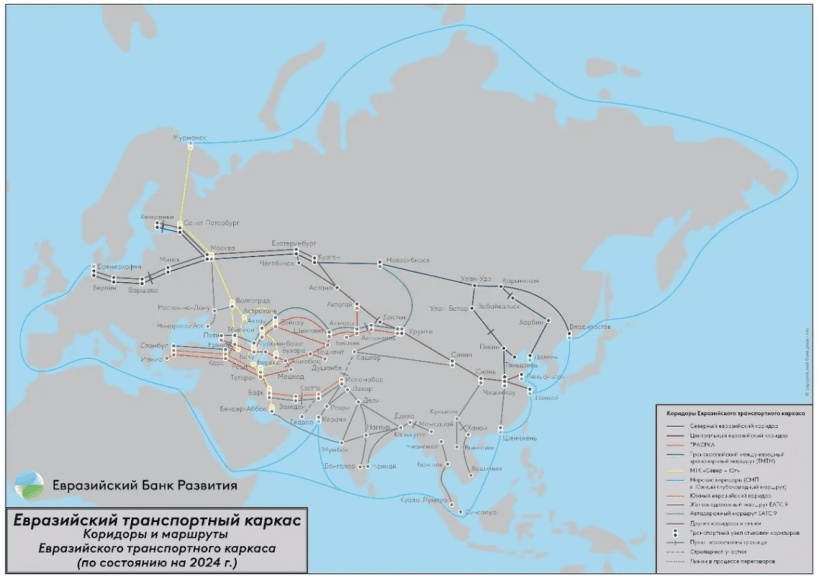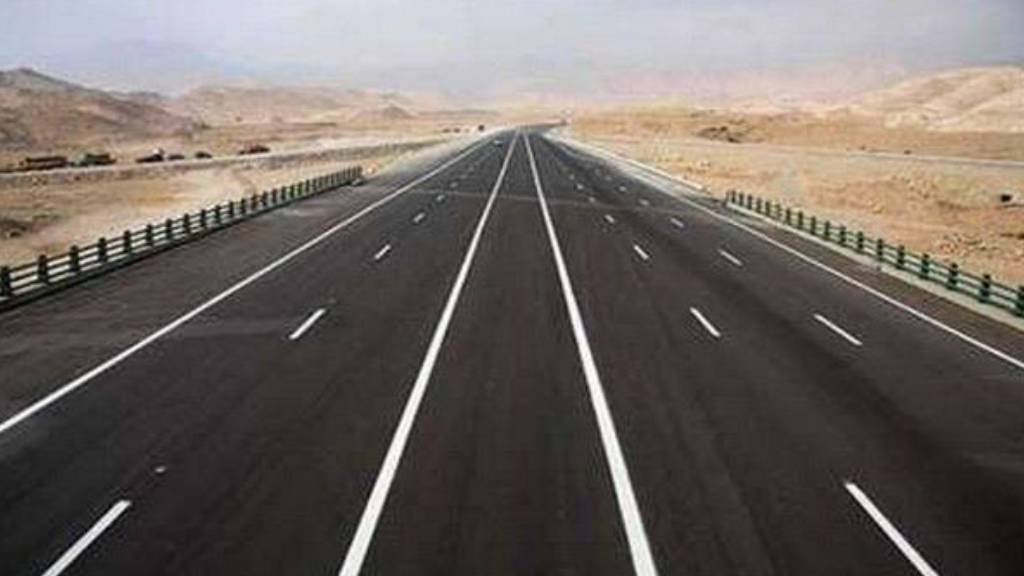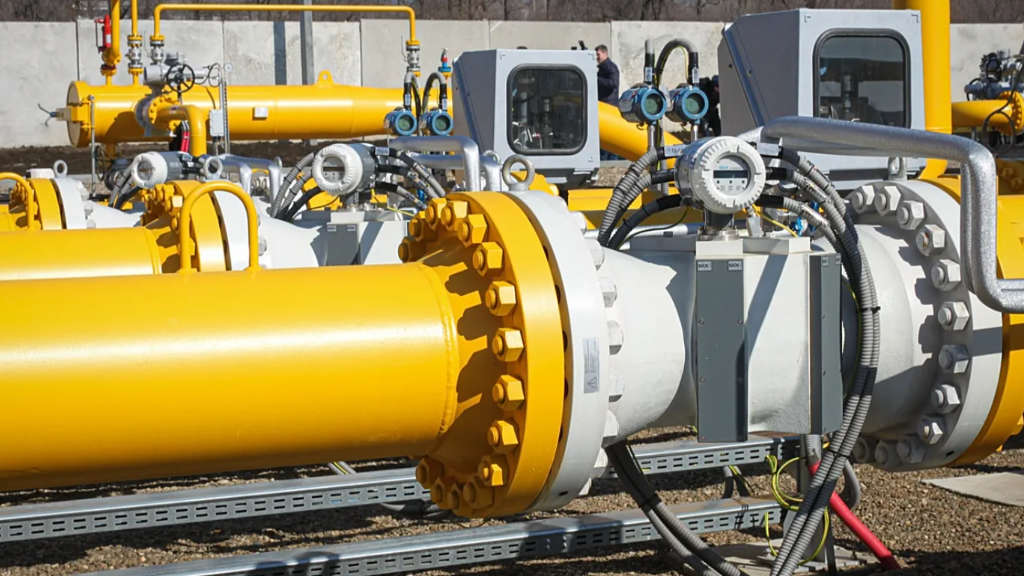The Eurasian Development Bank (EDB) is promoting the fulfilment of a unified transport network in Eurasia, involving Russia, 12 additional countries, and 325 projects valued at US$234 billion. The EDB is jointly owned by Armenia, Belarus, Kazakhstan, Kyrgyzstan, Russia, Tajikistan, and Uzbekistan and is one of the most significant financial and economic integration projects of the post-Soviet countries.
According to the EDB’s 2024 report, the unification of transport corridors in the west-east and north-south directions will have the greatest effect on developing regional prosperity. The key element of this is infrastructure development.
To assess progress in infrastructure development, the bank has developed the Eurasian Transport Framework (ETF) Observatory, which includes a database of projects and a geographic information system for their positioning along the Eurasian transport corridors.
Evgeny Vinokurov, Deputy Chairman of the Board and Chief Economist of the EDB, states that “The countries of Eurasia need more efficient and cheaper transport links, especially along the North-South axis, which will stimulate trade with the countries of South Asia and the Persian Gulf. The ETF Observatory is a convenient analytical tool for assessing investment needs and plans to increase transport connectivity in Eurasia. It allows us not only to monitor what is happening in the transport space but also to help coordinate the efforts of the countries of the region and international financial institutions to implement projects that are priorities for the entire region.”

The observatory covers 13 countries, including Azerbaijan, Armenia, Afghanistan, Belarus, Georgia, Iran, Kazakhstan, Kyrgyzstan, Mongolia, Russia, Tajikistan, Turkmenistan, and Uzbekistan. The project data is based on open information sources, which include national and international transport development programs, press releases, expert assessments, and other available information.
The Observatory includes information about the names of projects with their descriptions, the country of implementation, the transport corridor, and the type of transport, as well as the volume of investments distributed by sources of financing, timing, implementation, and the suitability of Public-Private Partnerships (PPP). The latter is where the respective government puts up part of the capital, with the remainder to come from the private sector. Sometimes, when completed and when there is cash-flow generation (such as railways and toll roads), these projects can then be listed on regional stock exchanges.
As of July 1, 2025, the observatory has 325 ETF development projects, both already underway and planned, with a total investment of US$234 billion. 51% of these projects are being implemented or planned in the road sector. From a country perspective, 7 of the 10 largest ETF development projects are in Russia. With this in mind, the development of the Northern Eurasian Corridor is the most capital-intensive and requires US$78 billion in investments, which is more than a third of the capital expenditures for the development of the entire region.
Project documentation is being prepared for 13% of projects, while 27% are under discussion or planning.
Central Asia accounts for more than 22% of the investments directed to the development of ETF. 90 projects totalling about US$53 billion are being implemented or are planned to be implemented, with 44% of these to be implemented in Kazakhstan.
The EDB says that almost two-thirds of investments in Central Asia are directed towards the development of a network of main roads, which indicates a high need for high-quality road infrastructure for further growth of trade and international transportation in the region.
The 10 largest projects account for 58% of the total investment in the development of ETF in Central Asia. Among them are large-scale projects for the construction of the China-Kyrgyzstan-Uzbekistan railway, the Tashkent-Andijan highway in Uzbekistan, the Centre-West Expressway in Kazakhstan, the Ashgabat-Turkmenabat and the Serakhs-Mary-Serkhetabat highway in Turkmenistan.
The prioritization of projects is an important task in conditions of limited investment opportunities. In the five countries of the Eurasian region—Afghanistan, Tajikistan, Kyrgyzstan, Mongolia, and Armenia—the total cost of developing transport corridors is very significant not only in nominal terms but also in relation to the size of the GDP of these states.
International development banks, such as the EDB, and other development institutions can provide technical assistance in the selection of priority projects and their financing, especially in landlocked, mountainous, and other countries with special development conditions.
The EDB report states, “A total of 113 out of 325 ETF development projects involve the participation of private business in their implementation. Almost half are in logistics and warehouses. About 17 projects are being implemented or may be implemented based on PPP principles, including at least two projects based on cross-border PPP principles: the China-Kyrgyzstan-Uzbekistan railway corridor and the Trans-Afghan Railway Corridor. Increasing the number of projects attractive to MDBs and private investors, including those based on PPP principles, is becoming an important area of transport planning and development of cooperation between the countries of the region in the transport sector.”
Further Reading
Shanghai Cooperation Organisation to Develop Services Along Eurasian Vehicle Silk Roads






